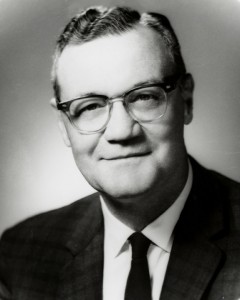 With easy and instant access to various forms of social media, graduating seniors no longer rely on yearbooks to tell the world what they did in college, and how they feel about their impending liberation from it. But our collection of OSU yearbooks, called the Makios, shows how past seniors could share a lot about themselves at this critical juncture in their lives, even in a tiny little space on a yearbook page.
With easy and instant access to various forms of social media, graduating seniors no longer rely on yearbooks to tell the world what they did in college, and how they feel about their impending liberation from it. But our collection of OSU yearbooks, called the Makios, shows how past seniors could share a lot about themselves at this critical juncture in their lives, even in a tiny little space on a yearbook page.
We chose several pages from the 1913 yearbook to display here, since that was a big year for OSU: The Thompson Library opened; campus faculty, staff and students rallied to help Columbus residents recover from a devastating flood; and both Woody Hayes and Jesse Owens were born.
The first part of each senior’s entry is the same: their degree majors and their hometowns are listed. Then, it gets more interesting when they list the (sometimes) many and diverse activities in which they participated during their college years. It’s a wonder some of these students ever had time to go to class and actually earn the degrees they list.
Finally, the most interesting feature: the quote each senior shares at the end of his or her entry. Some are poetic, nostalgic, or self-reflective, such as this entry from Frank Thompson, an Arts major from Washington Court House: “A man’s errors are what makes him amiable.” Others seem to want to predict the future, such as this entry from Harry Drain, an Agriculture major from Belpre, Ohio: “He had talents equal to business.” And still others sum up quite succinctly the experience of living independently for the first time, often in a place very far from home: “He was a stranger in a strange land,” wrote Wah Chin, an Agriculture major from China.
We hope you enjoy these snippets from yearbooks past. There are plenty more to be browsed in our online Makio archives, which you can access at go.osu.edu/makioarchives.











Recent Comments